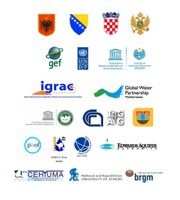Component (1) - Improving the understanding of the resource and of its environmental status.
|
- Scientists and experts of the participating countries develop a Transboundary Diagnostic
- Analysis; countries agree on baseline conditions and adopt environmental status indicators.
- Information database, including harmonized morphologic and thematic base maps, is prepared and adopted as basis for joint actions.
- Countries select sites for possible pilot demonstrations, based on agreed upon criteria.
|
|
|
Component (2) - Establishing cooperation mechanisms among countries sharing the aquifer.
|
- Cooperation schemes identified and tested in pilot sites, addressing different transboundary situations and concerns.
- Results achieved are shared among countries, and consensus is built on more effective frameworks for cooperation and exchanges.
- Establishment of a Consultative Body for the Dinaric Karst Aquifer System, and of coordination mechanisms with other relevant activities in the region – including GEF projects.
|
|
This includes close coordination with other groundwater related GEF funded projects as a very important issue to be addressed in the DIKTAS Project. Ongoing, or recently completed GEF international waters projects in SEE deal with groundwater dependent ecosystems (GDE), but without an explicit focus on groundwater: the Lake Ohrid (World Bank), and Lake Prespa (UNDP) Projects. Since 2002 the GEF has spearheaded an effort to fully integrate groundwater and GDEs into its programs. As a consequence, a new generation of projects is now being prepared which includes groundwater considerations. In SEE, several projects are at different stages of design (Dinaric Karst, Neretva Basin, Lake Shkodra).
Component (3) - Facilitating the harmonization of policies and priority reforms.
- Establishment of inter-ministerial committees that oversee the preparation of and agreement on a Strategic Action Program, based on analysis of options, which includes:
- priority policy, legal and institutional reforms, and investments that the countries are willing to undertake to address key transboundary concerns;
- environmental quality targets and a joint harmonized monitoring program of the environmental status. Adoption of the SAP at governmental level.
|
- Organization of a Partnership Conference with the participation of all countries of the region, key regional and international agencies and academic institutions, bilateral and multilateral.
|
|
|
Component (4) - Communication, dissemination and replication of activities.
|
- Various communication tools identified and used to highlight relevance of the Dinaric Karst Aquifer
- A project website
- Targeted capacity building programs to encourage effective replication of new practices
|
|
|
There are currently no criteria on which to search.
Please add them using the 'criteria' tab.


